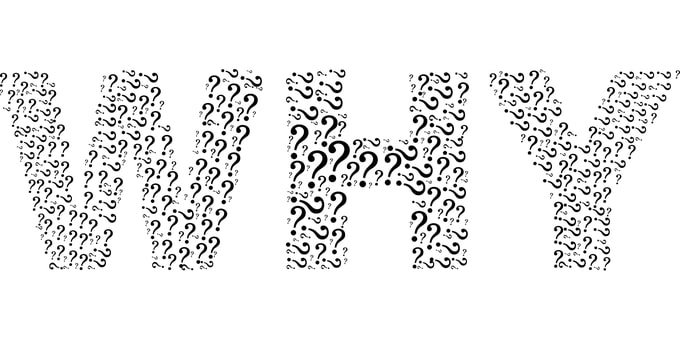The 5 W’s & the H (Who, What, When, Where, Why, and How) in Content Marketing
When companies need to recruit content marketers, do you know where they often turn to? In other words, do you know what the ideal talent pool of content marketers for companies is? It’s journalists. These people are the best fit for content writers. Why? Well, the first reason is they are writers all their lives; they know how to write clean and appealing stories that make the headlines.
Journalists can produce stories that attract and engage readers not because they have some innate talent, but because they have established for themselves a systematic way to break down stories in a way that makes sense to their target audience. They have a bag of secret questions that they refer to before they write a single line. These questions help them extract the right pieces of information out of a complicated messy story.
In this article, you will learn what those special questions are and how you can use them to write content that engages and converts customers.
Now, let’s jump right into the Who, What, When, Why (the 5 Ws), and How (the H) of content writing.
The 5 W’s and The H that can guide your content marketing to success

The First W: Who Is Your Audience?

The who question comes first because it is the core of your entire content marketing strategy; it’s the base upon which everything else is built. Different people have different needs and preferences, so there’s no such thing that one product can fit everyone. Look at the smartphone industry and you can see that there are tons of brand names on the market. Some people love Apple, others are into Samsung, and then others are into Huawei. And each of these companies produces content differently from each other so that they can be relevant to their own customer base.
This is the reason why you need to identify clearly who your audience is. The one whose problem your content and product can solve. The more information you can know of these people, the more effective your content will be. What you should do is do intensive research on what your customers need, what motivates them, what information they need to make a buying decision, etc. These questions are the building blocks of the who that you will need to target.
On top of identifying your target customer, another group of people whom you should identify as well is who is not your target customer. You can’t write content that targets two or more different needs at the same time. Those who want to find information about the iPhone will find content about Samsung very irrelevant and will just bounce (and vice versa). So, identify your ideal customer, craft your content to match the needs of this group. Then, identify those who are not the right fit and make sure that your content has nothing to do with this group of people.
The Second W: What Is Your Audience Looking For?

It’s sort of difficult to identify what your audience is looking for, but it’s very easy to identify what your audience is not uninterested in. The answer is the customers are not interested in why your product or brand is great; they don’t care. Although you might feel the urge to talk about why you are great as a brand, this is exactly the type of content that customers find the least interesting to read.
At the end of the day, customers don’t care about your brands or our brands either, customers care about their problems that they need to solve. So, the take-way is don’t write about yourself in your content if you’re going to attract readers.
Next up, what you can do to find out about what your customers are looking for is by doing research on keywords and search queries. When it comes to content marketing, search engines are one of the most important tools that you need to make full use of.
Why? Search engine queries are how your audience expresses their problems. What your audience does with search queries is just similar to what you and I do; when we don’t know something, we google it to find relevant information and get educated. To execute content marketing successfully, you need to understand the notion that most content marketing is about what your target audience is searching for on the web. If your content is not aligned with what your audience is looking for, you will be irrelevant to your customer.
I will not discuss in depth what tool you can use to do keyword research here because that is out of the scope of this article, but let me name a few of my favorites here so that you can do further research; they are Google Keywords Planner, BuzzSumo, Ahrefts and Semrush.
The Third W: Why Are Your Customers Looking For Those Things?

After you have identified the what, you need to move on to find about the why. If your audience is looking for certain things, then why are they doing so? What problems are they having that make them do these search queries?
For example, some people look for comparisons between the iPhone and Samsung because they are not sure which one can suit them better, and they are afraid of wasting their money on a wrong decision.
As a content marketer, you need to provide proof and answer this why question so that you can identify the problem that your audience is dealing with. If your answer helps inform your audience and solve their problem, they will perceive you as a reliable source of information, and if your product happens to solve their problem, they will certainly buy from you.
The Fourth W: When Should You Publish Your Content

This question requires you to find out at what time of day/week/month, you should publish your content (blog posts, social media updates, and so on). This part is unique for your audience base; for example, if you discover that your content has the most chance to be seen when you post early in the morning but not during the office time, then early in the morning is when you should publish your content.
One important aspect of the when question you need to keep in mind is you need to publish consistently. You should aim to achieve the highest quality for your content and provide values in every post and to ensure this, you can use IvoryResearch writing service, but you need to do so within a consistent posting schedule. This will allow your customers to know what to expect from you, and when you post consistently, you will have a higher chance of being remembered by your customers because they see you consistently day by day, week by week and month by month. Also, if you don’t post consistently, you will be outpaced by other brands who do so.
The Fifth W: Where Should You Publish And Promote Your Content?

Years ago, before the rise of social media, answering this question was fairly easy as blogging was the popular way of acquiring information. But today, this is no longer an easy question. I don’t mean that blogging has become obsolete; it is still very alive and well and popular, but the rise of social media brings a ton of different platforms (Facebook, Twitter, Snapchat, Instagram, TikTok, etc.) that are all operating on the market at the same time. As a result, the attention of the audience has become fragmented all over many platforms.
With this many platforms to consider, it seems a little bit overwhelming to identify where you should distribute your content. However, it’s not that difficult in reality, and the question that you need to get right boils down to where your target customers hang out on the web.
What does this mean? This means if your target customer is business people, the first platform that you should focus on is LinkedIn because that is where professionals hang out. If your content involves lots of visuals, then Instagram is the go-to place.
On top of that, Gary Vaynerchuck, CEO of the well-known marketing agency VaynerMedia, has mentioned time and time again that All content marketers need to do is finding out where the attention of their audience is, and then produce content that fits the environment of that platform.
For example, LinkedIn is suitable for long-form content such as in-depth articles that break down complicated subjects, but Facebook and Instagram favors short-form content more.
Relevant Posts:
- Shopify Facebook Marketing: How to Market your Business with Facebook
- Using Instagram for Business: Attract Customers with Visual Content
- What is social media marketing? Why Social Media Marketing is a Must For Business
The H Question: How Do You Solve Your Customer’s Problem or Provide Them Value?

When you have identified the who, the what and the why, you will need to find out about the how. The how is how you can provide your customers value and build up relationships with them. We all don’t read content for the sake of reading, we read to solve our problems, and we expect the content we read to solve our problem; you, your customers, or me is no different.
So, for whatever topic you’re writing about, keep in mind that the number one goal of content marketing is to provide your customers value by helping them solve the problem that they are looking to solve.
Guide for brainstorming your content with the 5 Ws and H:

At this point, you probably have an idea of what the 5 W’s and H are when it comes to content marketing. But everything that I have addressed above seems quite theoretical and can be hard to put into practice. So, in this next section of the article, I will walk you through how you can apply the 5 W’s and H to your content marketing plans.
The following is a list of W & H questions that you can ask yourself while you’re writing your content and direct it based on your established goal.
The Who question:
- Who is affected?
- Who is involved?
- Who will benefit?
- Who has this problem?
The What question:
- What do you need to cover in this topic?
- What is the key point?
- What impact do you want this article to create?
The Why question:
- Why is this topic important to your audience? Why does it matter?
- Why does your audience struggle with this problem?
The When question:
- When should you distribute this content to reach as many people as possible?
The Where question:
- Where should you distribute this content to reach as many people as possible
The How question:
- How to solve the problem that you’re about to address in this article?
- How can you help your customer solve their problem?
Final Thoughts
The What, Why, When, Where and How are the building blocks of every content marketing campaign. Every time you get stuck during your content generating process, go back to these questions and you will definitely find a way out.
I hope this article has taught you how to use the 5 W’s and H in your next content marketing campaign. Now, let’s bring what you have learned into practice!
New Posts







